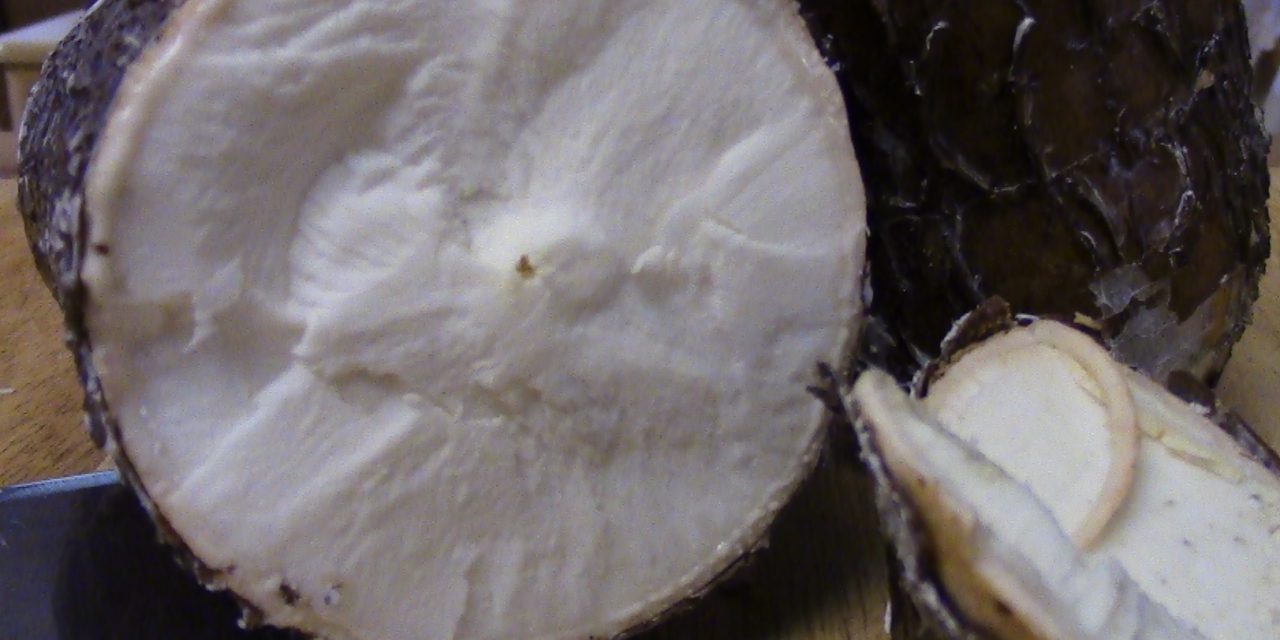 Because I like to do things the hard way, I figured I would attempt to make my own cassava flour. I purchased the yuca root at my local grocers, brought it home, and followed the recipe. Grate, boil, oil, knead, mash, and make empanadas . My first attempt at making tapioca flour turned out to be a disaster, but I’ll make another attempt. I’m a determined chef.
Because I like to do things the hard way, I figured I would attempt to make my own cassava flour. I purchased the yuca root at my local grocers, brought it home, and followed the recipe. Grate, boil, oil, knead, mash, and make empanadas . My first attempt at making tapioca flour turned out to be a disaster, but I’ll make another attempt. I’m a determined chef.
I made my own tofu, once. I made my own tamarind paste, once. And now I’ve made my own tapioca flour. All in the search for food knowledge. How easy or hard it is to duplicate something that I can find at the market? Tapioca flour is now available from several companies. Tamarind paste is prevalent in local Asian and Indian markets. And tofu I can buy in abundance. But making the food from the start gives me an understanding of how the recipes developed and how other people who don’t have access to pre-made foods cook.
It is an experience. One I will continue to pursue and document in this blog. Having the ability to make my own food is a good survival skill. The cook is the least likely target in a hostile situation.
What exactly is yuca root (not to be confused with yucca, which is a different plant)? It is known by different names in different parts of the world. Cassava, tapioca, manioc, mandioca, kappa, and mogo. Here’s a little of the history.
Cassava originated in South America. Archeological evidence shows that it dates back to over 10,000 years ago in Central Brazil. It migrated its way through the continent, up into Central America and Mexico. Eventually it took root in the Caribbean.
Enter the Spanish Conquistadors, and the Portuguese, who then brought the crop back to Europe, and into Africa and Asia where it quickly became a staple food in many areas of these continents.
 The cassava or yuca root can grow in harsh conditions, making it an ideal food for drought-ridden areas. It is prolific in the tropics and has a high yield. You cannot survive on this root by itself, as it is loaded with carbohydrates, but not protein. It can be ground into flour, but has to be soaked and rinsed in order to remove the trace amounts of cyanide found in the root.
The cassava or yuca root can grow in harsh conditions, making it an ideal food for drought-ridden areas. It is prolific in the tropics and has a high yield. You cannot survive on this root by itself, as it is loaded with carbohydrates, but not protein. It can be ground into flour, but has to be soaked and rinsed in order to remove the trace amounts of cyanide found in the root.
Cassava is the root that produces tapioca. It also has many commercial applications. Here in the Southwest, we like to fry it, mash it, roast it, and put it into stews and soups. As a thickening agent, it’s a great alternative to the potato.
Yuca may not have lots of protein, but it does have qualitative amounts of calcium and vitamin C and contains significant quantities of thiamine and riboflavin.
Does this mean you should run out and buy all the yuca root you can possibly find? Maybe not. Should you try it? Yes. Or at least find a local Latin or Dominican restaurant that carries Yuca Fries, or Yuca Fritters, traditionally served with pink sauce. I served mine with tamarind chutney. Come back on Wednesday for a look at how to fry yuca.







